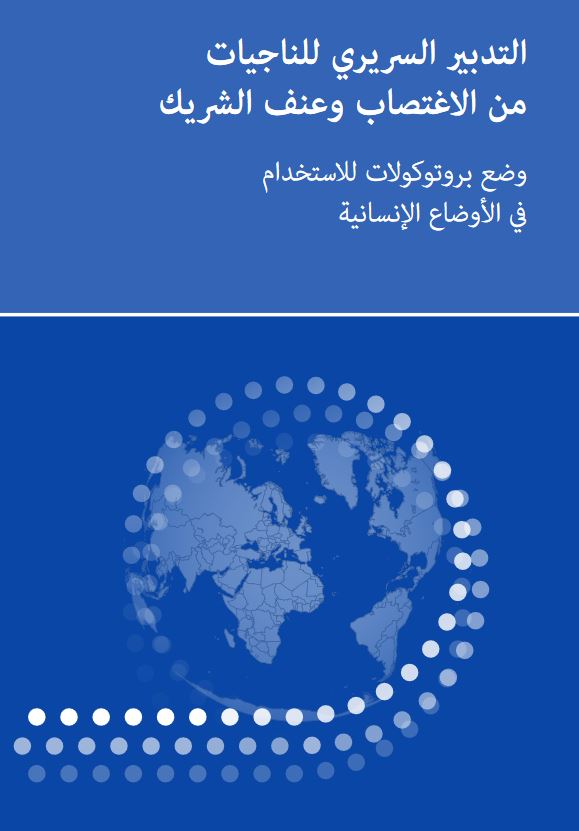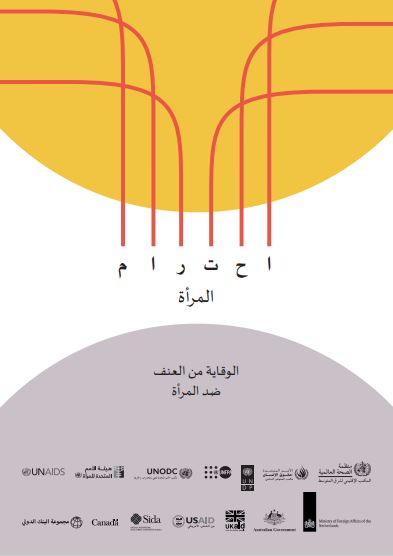11 January 2021 – As part of its effort to address violence against women and girls, the WHO Regional Office for the Eastern Mediterranean is pleased to launch the Arabic version of the of the "Clinical Management of Rape and Intimate Partner Survivors Guideline" and "Respect Framework for Preventing Violence against Women". These two fundamental tools address prevention and the response to violence against women, whether sexual or by an intimate partner, in both the development and humanitarian context.
This effort is aligned with the work of WHO and partners towards achieving related Sustainable Development Goals (SDGs) targets, and within the mandate of WHO's global plan of action to strengthen the health systems response to violence against women and against children endorsed by the World Health Assembly in 2016, the United Nations General Assembly Resolutions on Women, Peace and Security and other Member State commitments (e.g. agreed conclusions of the CSW 57).
This translation maximizes benefit from these 2 important documents in the Eastern Mediterranean Region as it allows proper dissemination and easy access for thousands of users from different countries.
Clinical management of rape and intimate partner survivors guideline
 Updated Clinical management of rape and intimate partner survivors guidelineIn 2004, World Health Organization (WHO), the United Nations High Commissioner for Refugees (UNHCR) and the United Nations Population Fund (UNFPA) developed the "Clinical management of rape survivors: developing protocols for use with refugees and internally displaced persons". In 2019, based on new available evidence and tools, WHO, the United Nations Population Fund and UNHCR produced an updated version of "Clinical Management of Rape and Intimate Partner Violence Survivors Guideline (2020)".
Updated Clinical management of rape and intimate partner survivors guidelineIn 2004, World Health Organization (WHO), the United Nations High Commissioner for Refugees (UNHCR) and the United Nations Population Fund (UNFPA) developed the "Clinical management of rape survivors: developing protocols for use with refugees and internally displaced persons". In 2019, based on new available evidence and tools, WHO, the United Nations Population Fund and UNHCR produced an updated version of "Clinical Management of Rape and Intimate Partner Violence Survivors Guideline (2020)".
This update aims to bring alignment with the more recent WHO guidelines on providing clinical care to survivors of rape. It includes additional information on responding to the needs of survivors of intimate partner/domestic violence, and on addressing the mental health needs of gender-based violence survivors.
 Arabic version Humanitarian settings put women and children are at increased risk of violence. The high rates of sexual violence and intimate partner violence are well documented and constitute a serious violation of international humanitarian law and human rights law.
Arabic version Humanitarian settings put women and children are at increased risk of violence. The high rates of sexual violence and intimate partner violence are well documented and constitute a serious violation of international humanitarian law and human rights law.
The guideline is intended for use by qualified health-care providers (medical doctors, clinical officers, midwives and nurses) working in humanitarian emergencies or other similar settings, and who wish to develop specific protocols for medical care of survivors of sexual violence and domestic/partner violence.
RESPECT framework for preventing violence against women
 RESPECT framework for preventing violence against womenViolence against women is preventable. Preventing violence against women requires strategies that stop violence before it occurs (i.e. primary prevention) or reduce the frequency and recurrence of such violence (i.e. secondary prevention).
RESPECT framework for preventing violence against womenViolence against women is preventable. Preventing violence against women requires strategies that stop violence before it occurs (i.e. primary prevention) or reduce the frequency and recurrence of such violence (i.e. secondary prevention).
An emerging body of evidence shows that promising interventions include those that change unequal gender norms and attitudes through community mobilization strategies, participatory group approaches to generate critical reflection, combined economic empowerment and gender equality trainings with women, victim advocacy, and home visitation and health worker outreach interventions. This body of evidence also highlights that successful approaches are those that are longer term (i.e., last more than 6 months); include a component of empowering women; keep a focus on gender-power analysis; combine approaches at multiple levels of the social ecological model and across sectors; include capacity strengthening of implementers; and take a life course approach by intervening early and at key transition points in the lives of individuals.
To support countries in translating their commitments into actions, UN agencies, including WHO, published a framework for action to prevent violence against women in 2015. Building on this, WHO finalized a concise updated package/framework with infographics on prevention of violence against women - “RESPECT – Preventing violence against women: A framework for policymakers”.
In the RESPECT framework each letter stands for a strategy to strengthen related policies, laws and institutions:
R – Relationship skills strengthened.
E – Empowerment of women.
S – Services ensured.
P – Poverty reduced.
E – Environments made safe.
C – Child and adolescent abuse prevented.
T – Transformed attitudes, beliefs and norms.
The adoption of RESPECT will help to address violence against women and promote gender equality, by allocating human and financial resources and investing in strengthening the services supporting the work of all stakeholders including women’s organizations.
Related links
Updated Clinical management of rape and intimate partner survivors guideline | Arabic
RESPECT framework for preventing violence against women | Arabic



